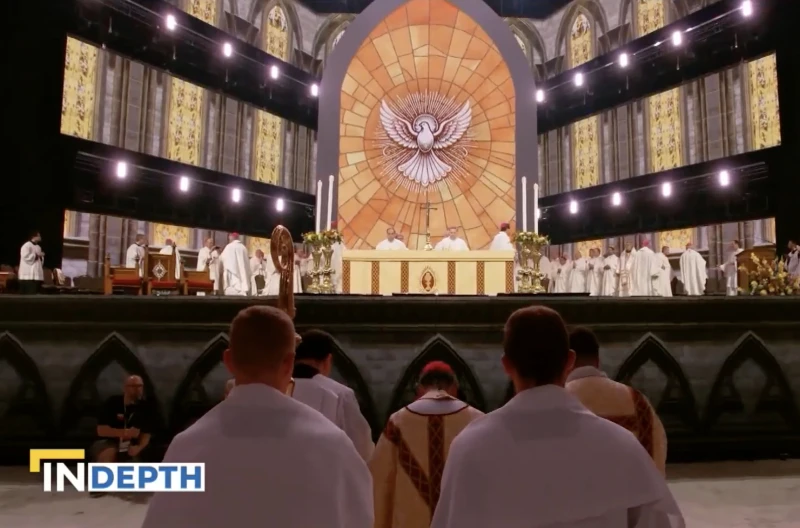

New York and California are pouring taxpayer dollars into Planned Parenthood, joining several other states in counteracting the federal defunding of the abortion giant. / Credit: Jonathan Weiss/Shutterstock
CNA Staff, Oct 25, 2025 / 10:00 am (CNA).
New York and California are pouring taxpayer dollars into Planned Parenthood, joining several other states in counteracting the federal defunding of the abortion giant.
California Gov. Gavin Newsom pledged $140 million to Planned Parenthood locations in California on Oct. 24. On the same day, New York Gov. Kathy Hochul committed $35 million in funding to Planned Parenthood locations in New York.
Both states are known for their abortion shield laws, which protect abortionists who mail abortion pills into states where they are illegal. Several women are suing California and New York abortionists after being poisoned by or coerced into taking the abortion pill by the fathers of their children.
New York and California join several other states that have made similar moves in light of the yearlong federal defunding of Planned Parenthood. Colorado, Massachusetts, and Washington have all taken similar steps to replace lost federal funding for Planned Parenthood over the past few months.
Newsom said on Thursday that California is “protecting access to essential health care” by providing funding for more than 100 locations across the state.
“Trump’s efforts to defund Planned Parenthood put all our communities at risk as people seek basic health care from these community providers,” Newsom said in a statement.
Hochul in a similar vein said she is putting funding toward the 47 Planned Parenthood clinics in New York, alleging that pro-life politicians will “stop at nothing to undermine women’s health care.”
“In the face of congressional Republicans voting to defund Planned Parenthood, I’ve directed the state to fund these vital services, protecting access to health care that thousands of New Yorkers rely on,” Hochul said in a Friday statement.
Hundreds of alternative clinics exist in both states
A spokeswoman for Heartbeat International, a network that supports life-affirming pregnancy centers, told CNA there are many low-cost and even free alternatives to Planned Parenthood across the country — including hundreds of clinics and pregnancy centers in both New York and California.
Andrea Trudden said that “women in California and New York already have access to a vast network of life-affirming care.”
“California has more than 300 pregnancy help organizations and New York nearly 200,” Trudden said, citing Heartbeat International’s Worldwide Directory of Pregnancy Help.
“These centers offer practical support, compassionate care, and resources to women facing unplanned pregnancies, empowering them to choose life for their children and themselves,” she continued.
For women who need health care not related to pregnancy, Trudden noted that both states are “well served” by Federally Qualified Health Centers, which are centers that provide “comprehensive, low-cost medical care for women and families.”
As of 2024, California had more than 170 of these clinics, while New York had more than 60, Trudden said, citing a report by KFF, a health policy institute.
“If leaders truly cared about women’s health, they would invest in these community-based organizations that meet the needs of women before, during, and after pregnancy — not in the nation’s largest abortion provider,” Trudden added.
Kelsey Pritchard, a spokeswoman at Susan B. Anthony Pro-Life America, told CNA that in California, Planned Parenthood “is choosing to shutter primary care rather than give up profiting from abortions.”
In Orange and San Bernardino counties, Planned Parenthood will continue to offer abortions while closing primary care facilities.
“In California, New York, and across the country, Planned Parenthoods are outnumbered by far better options and the pro-life movement is happy to help women locate the care they need,” Pritchard said, citing reports by the Charlotte Lozier Institute on community care centers and pregnancy centers for women.
Jennie Bradley Lichter, the president of the March for Life, criticized politicians for prioritizing abortion funding instead of care for women and children.
“Political leaders who prioritize funding for Planned Parenthood leave no doubt where their priorities lie: and it is not with women and children,” Bradley Lichter told CNA.
“It’s a shame that the leaders of states like California and New York aren’t choosing to pour their resources into institutions that truly support moms, like the huge number of pregnancy resource centers located in each of those states,” she said.
Women deserve better than the “tragedy” of abortion, Bradley Lichter said.
“We at March for Life want women to know that when their state leaders fall short and leave them in the hands of Big Abortion, pro-life Americans will stand in the gap and help them find the love and care they need,” she continued.
Defunding Planned Parenthood: a ‘life-saving’ act
A spokesman for Live Action called the defunding of Planned Parenthood “one of the most lifesaving acts Congress has taken in decades,” noting that the federal government stopped funding the organization that “kills over 400,000 children every year.”
“That victory must be made permanent when the one-year cutoff expires next July,” Noah Brandt told CNA. “Yet pro-abortion states like California and New York are working to undo that progress, using taxpayer money to expand abortion through all nine months and to ship abortion pills nationwide.”
“Federal funding for Planned Parenthood must never return, and states that promote abortion should be held accountable for enabling the mass killing and sterilization of American children,” Brandt said.
Pritchard added that although Planned Parenthood is “constantly scheming to grow their grip on taxpayer money,” the pro-life movement has seen wins around the nation — most especially, the federal defunding of Planned Parenthood.
“Make no mistake, they are losing big in Congress, in courts, and increasingly in the hearts and minds of Americans,” Pritchard said.
Read More



